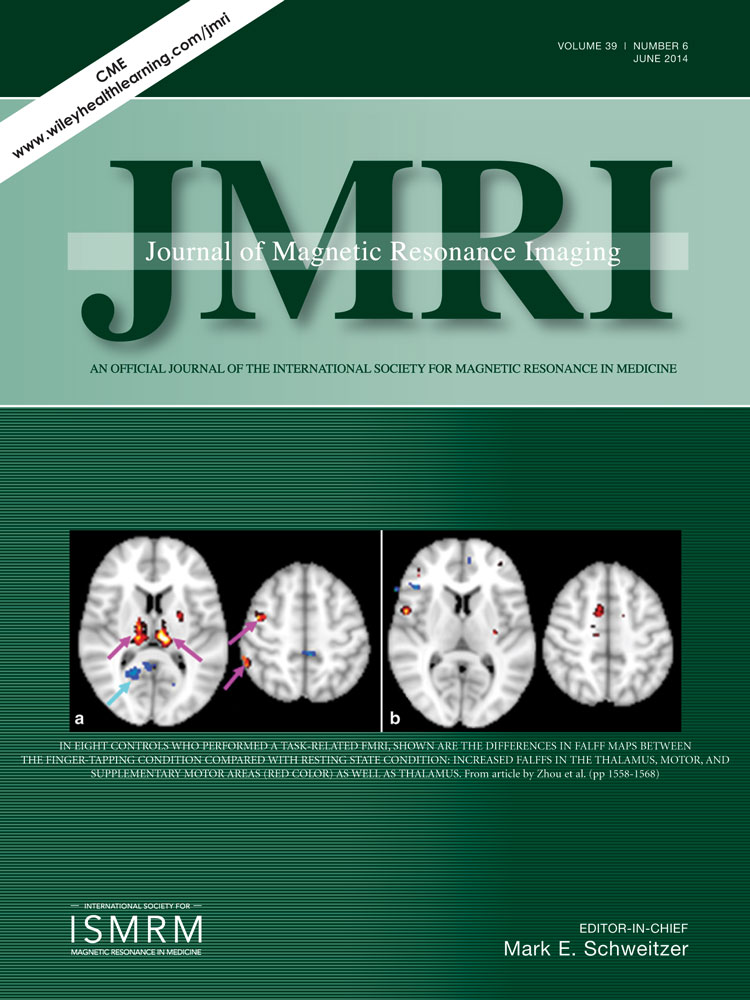High resolution diffusion tensor imaging of human nerves in forearm
Abstract
Purpose
To implement high resolution diffusion tensor imaging (DTI) for visualization and quantification of peripheral nerves in human forearm.
Materials and Methods
This HIPAA-compliant study was approved by our Institutional Review Board and written informed consent was obtained from all the study participants. Images were acquired with T1-and T2-weighted turbo spin echo with/without fat saturation, short tau inversion recovery (STIR). In addition, high spatial resolution (1.0 × 1.0 × 3.0 mm3) DTI sequence was optimized for clearly visualizing ulnar, superficial radial and median nerves in the forearm. Maps of the DTI derived indices, fractional anisotropy (FA), mean diffusivity (MD), longitudinal diffusivity (λ//) and radial diffusivity (λ⊥) were generated.
Results
For the first time, the three peripheral nerves, ulnar, superficial radial, and median, were visualized unequivocally on high resolution DTI-derived maps. DTI delineated the forearm nerves more clearly than other sequences. Significant differences in the DTI-derived measures, FA, MD, λ// and λ⊥, were observed among the three nerves. A strong correlation between the nerve size derived from FA map and T2-weighted images was observed.
Conclusion
High spatial resolution DTI is superior in identifying and quantifying the median, ulnar, and superficial radial nerves in human forearm. Consistent visualization of small nerves and nerve branches is possible with high spatial resolution DTI. These normative data could potentially help in identifying pathology in diseased nerves. J. Magn. Reson. Imaging 2014;39:1374–1383. © 2013 Wiley Periodicals, Inc.




